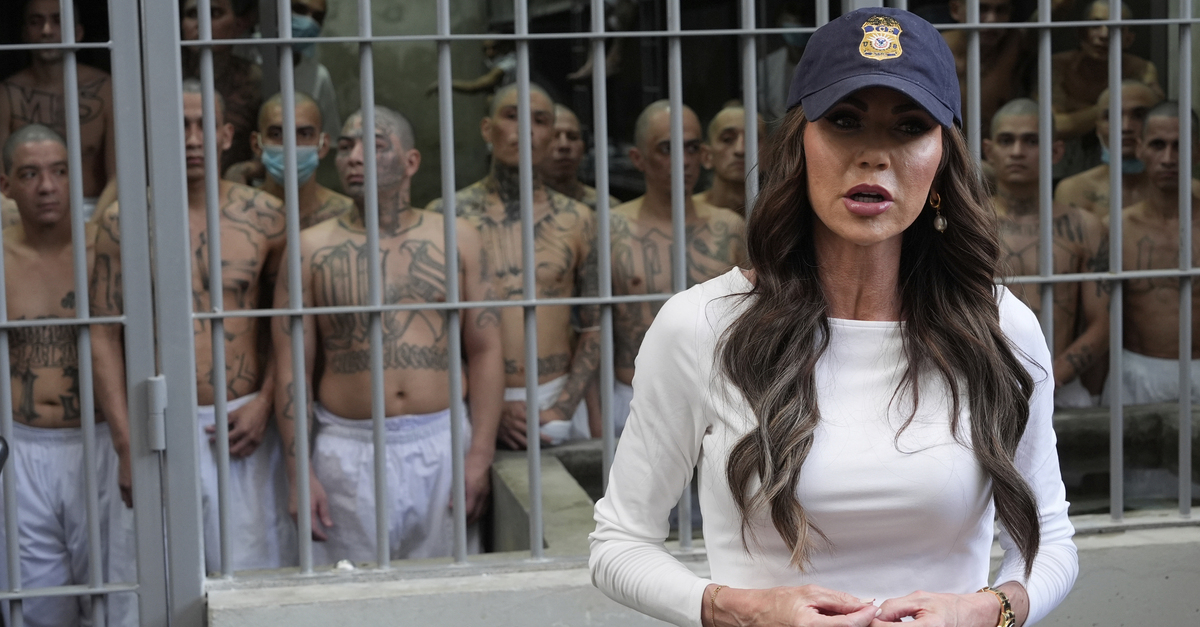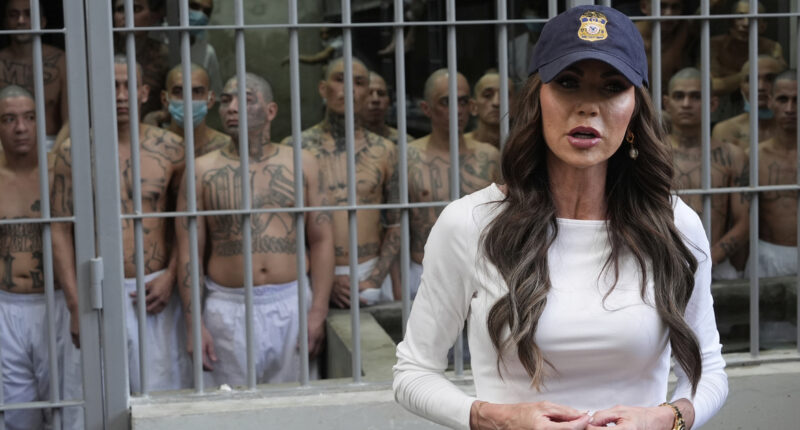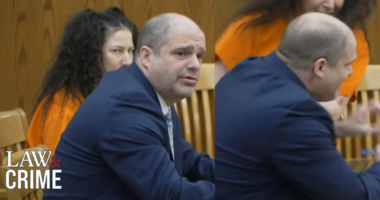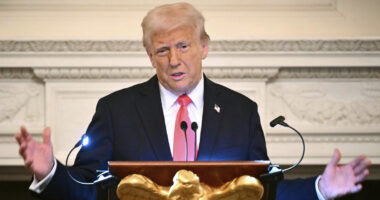
In a photo, prisoners are seen looking out from a cell while U.S. Homeland Security Secretary Kristi Noem addresses people during a visit to the Terrorist Confinement Center in Tecoluca, El Salvador, on March 26, 2025 (AP Photo/Alex Brandon).
A federal judge made a ruling on Friday, compelling the Trump administration to release millions of dollars in grants and disaster relief funds through FEMA to states that took legal action against the freeze on federal funding.
U.S. District Judge John McConnell, appointed by Barack Obama, issued a 15-page opinion and order that found FEMA, led by Homeland Security Secretary Kristi Noem, in violation of a temporary injunction preventing the government from proceeding with their proposed budget cuts in specific areas.
The government argued they complied with the court’s orders but the judge said the “record makes clear” that a so-called “manual review process” instituted by FEMA after the litigation began was a backdoor way to implement the verboten freeze.
“Thus, FEMA’s manual review process violates the court’s preliminary injunction order,” McConnell wrote in the Friday enforcement order.
In the order, the judge suggested FEMA has played fast and loose with compliance from the start, by seemingly ignoring the temporary restraining order (TRO) issued on Jan. 31.
“Within the weeks after the Court issued the TRO, the States continued to experience freezes of numerous grants and awards that went unresolved even after conferring with the Defendants’ counsel,” the judge writes. “Thus, the States moved to enforce the TRO, which the Court granted, ordering the Defendants to: (1) ‘immediately restore frozen funding’ and ‘immediately end any funding pause’ during the pendency of the TRO.”
That effort, however, also apparently went ignored. The plaintiffs later filed a second motion to enforce the restraining order, which was subsequently replaced by a preliminary injunction on March 6.
Now, months have passed, and the states are still waiting on statutorily-mandated and congressionally-outlaid money, including some funds dedicated to help victims of Hawaii’s 2023 wildfires.
The state plaintiffs have not received substantial funds “on important grants” since February, the court observed. This coincided, more or less, with a high-level FEMA email that instructed the placement of “hold toggles” and “financial holds” on all FEMA awards.
To hear the government tell it, these holds had nothing to do with the infamous Office of Management and Budget (OMB) memo mandating a governmentwide “temporary pause” on spending. Rather, FEMA claimed, in a follow-up email, the holds were the agency “adding a level of internal controls” and the awards “are still processing.”
The plaintiffs rubbished that excuse.
“[T]he States have presented undisputed evidence that this ‘processing’ of awards has yet to come,” the judge noted, “Overall, the States contend that ‘as of March 12, 2025, at least 215 FEMA grants to at least nineteen plaintiff states remain frozen or otherwise inaccessible.’ Thus, the States allege that FEMA’s implementation of a manual review process for payment requests violates the Court’s preliminary injunction order because it constitutes ‘a categorical pause or freeze of funding appropriate by Congress.””
The government, in turn, said “this manual review process is not violative of the Court’s injunction because FEMA is relying on its own independent authorities to implement the process rather than the OMB Directive,” McConnell summarized.
The judge rejected that argument, saying the “text is general” and that “nothing within the regulation authorizes FEMA’s imposition of the challenged manual review process-which essentially imposes an indefinite categorical pause on payments.”
Rather, the court found that FEMA was actually acting on guidance issued by Noem. And that guidance, the court observed, simply rehashes instructions issued by President Donald Trump in an executive order titled: “Protecting The American People Against Invasion,” This order was one of those that gave rise to the ill-fated OMB directive. Furthermore, the court noted, Noem’s own guidance came the day after OMB told the entire federal government to pause funds.
The judge looked at all of this information and found FEMA’s justification for the manual review process entirely lacking.
“In any event, the States have presented evidence that strongly suggests that FEMA is implementing this manual review process based, covertly, on the President’s January 20, 2025 executive order,” McConnell continues. “The temporal proximity between the issuance of the Invasion EO, the OMB Directive, and the NGO Grants Directive further illustrates that Secretary Noem’s mandate to pause DHS funding related to immigration was an effort to carry out the funding pause directed in the Invasion EO.”
Love true crime? Sign up for our newsletter, The Law&Crime Docket, to get the latest real-life crime stories delivered right to your inbox.
And, the court noted, the executive order itself was identified as part and parcel of the spending freeze — and is also enjoined.
“FEMA received notice of the preliminary injunction order, the order is clear and ambiguous [sic], and there are no impediments to FEMA’s compliance with the order,” the judge concludes. “The record makes clear that FEMA’s manual review process imposes an indefinite pause on the disbursement of federal funds to the States, based on funding freezes.”
In enforcing the order, FEMA is directed to immediately stop using the manual review process, disburse the funds in accordance with their pre-freeze scheduling, and make sure everyone in the agency who works with funding is aware of the order and compliant within 48 hours.










